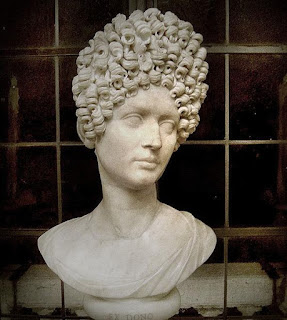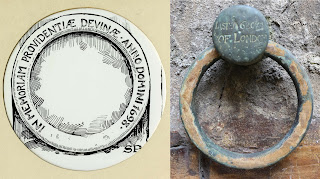Hello!”
“Are you familiar with the Anglo-Saxons and what came after Rome?”
Unfortunately, unless an enthusiast or someone who has
studied the period at University, your answer will probably be: no. The years
AD410-1066 are hardly touched upon in school curricula and yet are some of
the most formative in the history of Western Europe; helping us to understand
everything from the formation of countries to why Bath is in Somerset rather
than Gloucestershire. Not learning about it is equivalent to Americans not
learning about Columbus. So that's why I chose to do this period for my handling table this summer.
 |
| map of the South West in Saxon times |
When King Alfred (AD 871-899) founded his burh at Baðum (Bath) in the aftermath of his wars with the Vikings, he established a market town on
a new street plan, next to an earlier English monastery within the decaying
walls of Roman Aquae Sulis. The latter had been in long decline, beginning even
before the end of Roman Britain. Iconoclastic Christians had cast down the
pagan statues and altars for use in road surfaces, residential buildings were
converted into workshops and tell-tale layers of organic material illustrate
ever increasing agricultural activity within the walls.
The ruins of Aquae
Sulis as were immortalised by an early English Poet in the words of The Ruin:
“Wondrous is this stone-wall, wrecked by fate;
the city-buildings crumble, the works of giants decay.
Roofs have caved in, towers collapsed
…
undermined by age.”
the city-buildings crumble, the works of giants decay.
Roofs have caved in, towers collapsed
…
undermined by age.”
Bath, along with Gloucester and Cirencester, was conquered
by the English in 577 at the battle of Dyrham, not far from Bath. In this era
of squabbling petty kingdoms and Bath became the southern tip of the kingdom of
the Hwicce, a sub-kingdom of Mercia, whose King Osric founded a minster in the
city in 675. Bath’s Roman past and location on the Mercian/West Saxon border
meant that it remained important throughout the period.
 |
| Major towns had exclusive rights to minting and trade. This silver penny of Aethelred was minted in Bath and is in the Roman Baths Museum collection |
Almost certainly
concerned with the defence of his realm the powerful Mercian King Offa
(757-796) effectively confiscated the land given to the church by Osric and as
already mentioned, the ruined city was later chosen by Alfred for the site of a
burh. Bath’s imperial connotations must also have been key in Edgar’s decision
to be re-crowned in the city in 973.
 |
| Part of a Viking sword found in the ditch of the Saxon town on Upper Borough Walls, Bath |

































